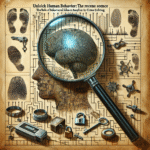
Introduction
In today’s fast-paced, interconnected world, the traditional hierarchy within organizations is being challenged like never before. The concept of power dynamics is undergoing a transformative shift, where the age-old belief that authority equates to power is being reassessed. Understanding the nuances of these dynamics is essential for building a thriving organizational culture. Robust power structures empower employees, foster innovation, and lead to higher engagement levels. This article, Beyond Authority: Exploring Power Dynamics in Organizational Culture, aims to delve into this fascinating topic, offering fresh insights into how these dynamics shape organizations for the better.
The Evolution of Power in Organizations
From Hierarchical to Dynamic Structures
Historically, organizational structure mimicked a pyramid—top-down authority with a single decision-maker at the helm. However, modern organizations are leaning towards flatter, more agile structures where collaboration and teamwork take precedence. This shift raises questions: What does power mean in this new environment? How can teams function effectively beyond the limits of authority?
Case Study: Google’s Innovation Culture
Google is often hailed as a prime example of an organization that has effectively redefined authority. The tech giant promotes an open culture where employees at all levels feel empowered to voice their ideas. By investing in a collaborative environment that prioritizes free expression, Google mitigates the dangers of conventional top-down control. This case illustrates how organizations can reap substantial benefits by embracing power dynamics that extend beyond authority.
Understanding Power Dynamics
The Types of Power in Organizations
Power can manifest in various forms within an organizational context:
- Legitimate Power: Arises from a formal position or role.
- Expert Power: Derives from specialized knowledge or skills.
- Referent Power: Stems from interpersonal relationships and personal charisma.
- Coercive Power: Based on the ability to impose penalties or sanctions.
- Reward Power: Linked to the ability to offer rewards.
Understanding the interplay between these forms of power can help organizations redefine authority and cultivate a more inclusive culture.
The Role of Trust and Relationships
At the heart of effective power dynamics is trust. When trust exists within an organization, employees are more likely to share their ideas openly, contributing to a culture that values collaboration over competition. By exploring how trust plays a pivotal role in shaping power dynamics, organizations can create a strong foundation for growth.
Table 1: Types of Power in Organizations
| Type of Power | Description | Example |
|---|---|---|
| Legitimate | Power from a formal position | CEO making strategic decisions |
| Expert | Power from specialized knowledge | Senior engineer advising team |
| Referent | Power from interpersonal relationships | Influential team leader |
| Coercive | Power to enforce penalties | HR manager implementing policies |
| Reward | Power to provide rewards | Manager offering bonuses |
Power Dynamics and Employee Engagement
The Impact on Morale and Productivity
Power dynamics directly influence employee morale. When employees feel undervalued or marginalized, their engagement plummets. Conversely, organizations that cultivate an environment of shared power—where every voice is heard—experience higher productivity and job satisfaction.
Case Study: Zappos’ Holacratic Structure
Zappos adopted a holocratic approach to governance, distributing authority throughout self-organizing teams. This method not only promotes innovation but also enhances employee ownership. Teams at Zappos thrive under this model, which embodies the essence of Beyond Authority: Exploring Power Dynamics in Organizational Culture.
Chart 1: The Relationship Between Power Dynamics and Employee Engagement
| Power Dynamics | Employee Engagement Level |
|---|---|
| Hierarchical | Low |
| Traditional | Moderate |
| Holacratic | High |
Challenges of Navigating Power Dynamics
Resistance to Change
While the shift towards more dynamic power structures is beneficial, it comes with challenges. Change resistance from individuals accustomed to traditional authority can hinder progress. Addressing these barriers requires thoughtful strategies to foster openness and adaptability.
Hierarchical Overhang
Organizations with a longstanding hierarchical structure may face difficulties while integrating new power dynamics. Leadership must be willing to exhibit vulnerability and engage in continuous learning to effectively transition their teams.
The Role of Leadership
Leaders act as facilitators in this new era. They must recognize that power is a shared resource rather than a limited commodity. By leading by example and promoting collaborative decision-making, they can nurture an inclusive culture that aligns with Beyond Authority: Exploring Power Dynamics in Organizational Culture.
Strategies for Implementing Empowering Power Dynamics
Cultivating a Culture of Collaboration
Encouraging teamwork over competition is essential for fostering a culture that emphasizes shared power. Organizations can implement collaborative platforms that facilitate brainstorming and idea-sharing sessions, ensuring that all stakeholders feel valued.
Training and Development Programs
Investing in training programs aimed at enhancing emotional intelligence can help leaders and employees navigate complex power dynamics. Understanding interpersonal skills and cultural awareness is key to building trust and collaboration.
Feedback Loop Systems
Organizations should establish feedback mechanisms that allow employees to share insights on power relations and overall organizational climate. This ensures continuous improvement and builds a culture of openness.
Conclusion
As organizations evolve, understanding the intricate dance of power dynamics becomes critical. By moving beyond authority, organizations can unleash the potential of all employees and foster a culture that is innovative, engaged, and resilient.
Establishing transparent communication, promoting collaboration, and embedding trust are foundational steps towards redefining power structures. Organizations willing to embrace this change stand to reap numerous benefits, paving the way for sustained growth and success.
FAQs
1. What are power dynamics?
Power dynamics refer to the ways in which power is distributed and exercised within an organization. This encompasses how decisions are made, who gets to influence those decisions, and the relationships between various roles.
2. Why is it important to explore power dynamics?
Understanding power dynamics helps organizations create inclusive cultures, foster innovation, and promote employee engagement, ultimately leading to better performance and satisfaction.
3. How can organizations shift from traditional to dynamic power structures?
Organizations can facilitate this shift by promoting collaboration, implementing feedback systems, and investing in training programs that equip employees with the skills to navigate change.
4. What role do leaders play in power dynamics?
Leaders serve as facilitators in power dynamics, guiding teams towards shared decision-making, cultivating trust, and promoting a culture that values every individual’s contribution.
5. Can you give an example of a successful organization in this regard?
Companies like Google and Zappos are excellent examples of organizations that have successfully navigated power dynamics by creating cultures that empower employees, resulting in innovative solutions and high employee satisfaction.
Through the exploration of power dynamics beyond authority, organizations are well-positioned to thrive in an ever-changing landscape, transforming challenges into opportunities for growth and development.















